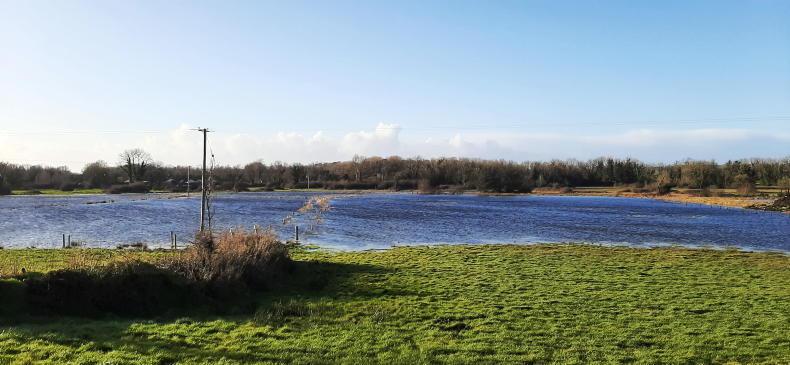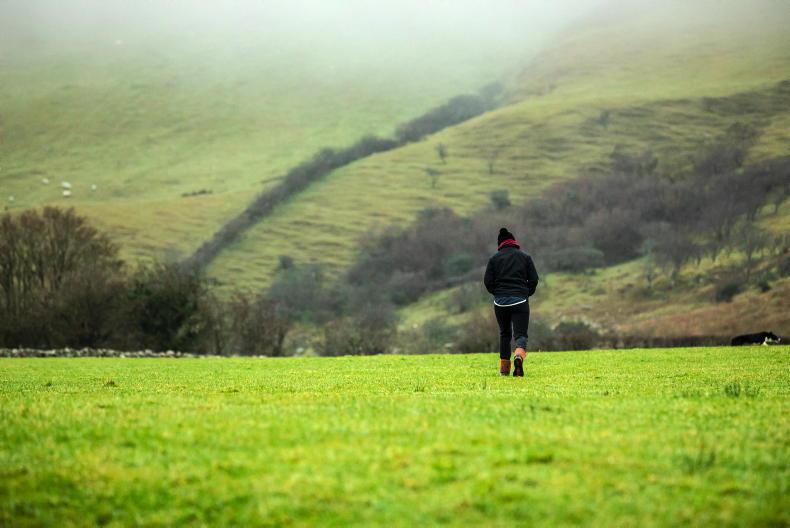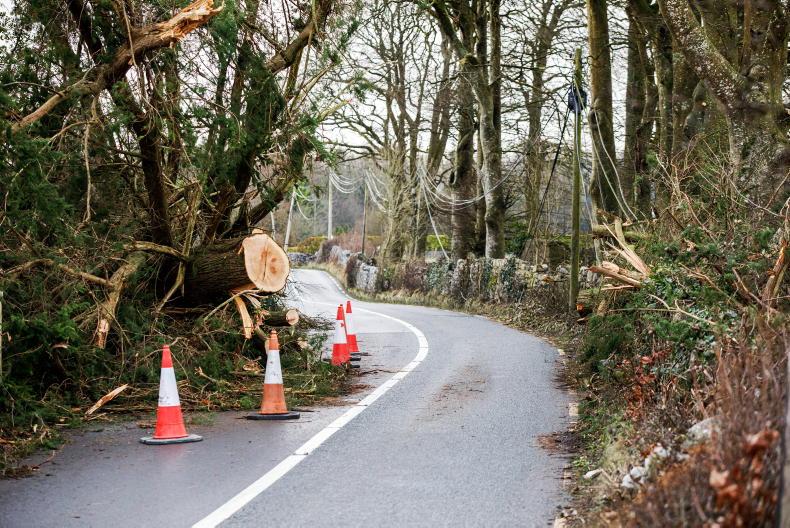Reader Query
“A new social housing development has been built bordering my land. Part of the farm does get minor flooding from time to time and will disappear after two to three days. Inside the farm there are open dykes, which allow the flow of water to pass through the farm from up stream. Before the water exits the land, it has to travel underground for 300 to 400 metres before reaching the development site where, before development, it continued its natural flow underground into an open drain in land at the other side of the site.
“I believe that excavation works carried out on site have collapsed the underground culverts, which has caused the extensive flooding. We have met with the county council over time since flooding started trying to resolve the situation, but they say they’re not at fault.”
Aisling Writes
This is an issue that affects a lot of landowners especially at this time of year and the law is rather complex as it depends on the circumstances of the case.
Different rules apply depending on whether the drains are natural or whether they were created artificially. Where water naturally drains from one property to another, a natural right of drainage exists under common law. However, the channelling of water by a pipe or other artificial means on to land where it would not naturally flow can only exist as an acquired right or in legal terms as an easement.
It appears from your query that some of the drains are naturally occurring while others appear to be channelled by artificial means. Consequently, I will set out the law as it relates to both situations.
Natural rights of drainage under common law
In a situation where water naturally drains from one property to another (as opposed to artificially created drains), the owner of land bounding a natural river or stream can protect against flooding of his lands by banking a river for example.
Equally, the owner of lower lands can take action to pin back or stem the flow of water.
If water on the higher land naturally passed on to the lower land, the owner of that lower land does not necessarily have a cause of action against the higher landowner in nuisance or trespass if the natural flow of water floods his lower lands.
If the risk of flooding to the lower landowner can be reduced by the higher landowner cleansing and scouring the watercourse, the higher landowner will be in breach of duty if he does nothing at all
However, he can protect his lands by making a barrier, even though this may cause damage to the higher landowner.
An action to pen back the water must be no more than is reasonably necessary to protect the lower landowner’s own enjoyment and he must not act for the purpose of injuring the higher landowner.
For example, if a stream is known to flood, if the risk of flooding to the lower landowner can be reduced by the higher landowner cleansing and scouring the watercourse, the higher landowner will be in breach of duty if he does nothing at all. But if the only remedy is substantial and expensive works, he may discharge his duty by telling his neighbours that they are free to do the works at their own or at a shared expense.
Easement in respect of water and drainage for artificial drains
If drains have been created, it would appear that water has been channelled by artificial means and so to claim any rights, you must be able to prove that you have established an easement across those neighbouring lands. The most commonly known easement is a right of way and the same principles apply to a right of drainage.
To establish an easement in an artificial watercourse such as pipes, ditches or drains (as opposed to natural rights in a natural watercourse), the court takes into consideration (a) the character of the watercourse, whether permanent or temporary, (b) the circumstances under which it was presumably created and (c) the mode in which it has been in fact used and enjoyed.
That is dependent to a large extent on the drain across the lands now owned by the council being in existence for 20 years or more
For example, where a drain was constructed through the lands of several landowners, the consent of each was necessary to its construction, its construction was of equal benefit to each landowner, the circumstances are such that each would have a right to use it so long as it continued to exist.
Thus, after 20 years of enjoyment, each would have acquired a prescriptive right to the flow.
Where a prescriptive right to discharge surface water across adjacent property by a specific channel has been acquired, the obstruction of the channel by the owner of the land over which it crosses is a breach of those prescriptive rights.
So, if the county council were to block the drains on their land, which would cause the flow of water to back up, they may be deemed to be interfering with your prescriptive rights. That’s assuming you can prove that you can establish a prescriptive right and that is dependent to a large extent on the drain across the lands now owned by the council being in existence for 20 years or more.
Where a prescriptive right to discharge surface water across adjacent property by a specific channel has been acquired, the obstruction of the channel by the owner of the land over which it crosses is a breach of those prescriptive rights
The nature and extent of a prescriptive right of drainage was considered by the High Court in the leading Irish case of Callan v McAvinue.
Waste water from the defendant’s swimming pool and kitchen, together with his septic tank effluent, was discharged by pipe into a branch of a stream.
Effluent
The stream ran dry so the effluent lay stagnant on the plaintiff’s lands. The court held that the defendant, the owner of the swimming pool, had acquired an equitable right to discharge properly treated effluent on to the lands of the plaintiff’s property.
You will probably need to speak with your solicitor to establish on the facts and circumstances of the case whether you have acquired an easement across the council lands. If you have, then the council will need to reinstate the culverts to facilitate your right to drainage across their lands. CL
Disclaimer: The information in this article is intended as a general guide only. While every care is taken to ensure accuracy of information contained in this article, Aisling Meehan, Agricultural Solicitors does not accept responsibility for errors or omissions howsoever arising. E-mail aisling@agrisolicitors.ie.
Reader Query
“A new social housing development has been built bordering my land. Part of the farm does get minor flooding from time to time and will disappear after two to three days. Inside the farm there are open dykes, which allow the flow of water to pass through the farm from up stream. Before the water exits the land, it has to travel underground for 300 to 400 metres before reaching the development site where, before development, it continued its natural flow underground into an open drain in land at the other side of the site.
“I believe that excavation works carried out on site have collapsed the underground culverts, which has caused the extensive flooding. We have met with the county council over time since flooding started trying to resolve the situation, but they say they’re not at fault.”
Aisling Writes
This is an issue that affects a lot of landowners especially at this time of year and the law is rather complex as it depends on the circumstances of the case.
Different rules apply depending on whether the drains are natural or whether they were created artificially. Where water naturally drains from one property to another, a natural right of drainage exists under common law. However, the channelling of water by a pipe or other artificial means on to land where it would not naturally flow can only exist as an acquired right or in legal terms as an easement.
It appears from your query that some of the drains are naturally occurring while others appear to be channelled by artificial means. Consequently, I will set out the law as it relates to both situations.
Natural rights of drainage under common law
In a situation where water naturally drains from one property to another (as opposed to artificially created drains), the owner of land bounding a natural river or stream can protect against flooding of his lands by banking a river for example.
Equally, the owner of lower lands can take action to pin back or stem the flow of water.
If water on the higher land naturally passed on to the lower land, the owner of that lower land does not necessarily have a cause of action against the higher landowner in nuisance or trespass if the natural flow of water floods his lower lands.
If the risk of flooding to the lower landowner can be reduced by the higher landowner cleansing and scouring the watercourse, the higher landowner will be in breach of duty if he does nothing at all
However, he can protect his lands by making a barrier, even though this may cause damage to the higher landowner.
An action to pen back the water must be no more than is reasonably necessary to protect the lower landowner’s own enjoyment and he must not act for the purpose of injuring the higher landowner.
For example, if a stream is known to flood, if the risk of flooding to the lower landowner can be reduced by the higher landowner cleansing and scouring the watercourse, the higher landowner will be in breach of duty if he does nothing at all. But if the only remedy is substantial and expensive works, he may discharge his duty by telling his neighbours that they are free to do the works at their own or at a shared expense.
Easement in respect of water and drainage for artificial drains
If drains have been created, it would appear that water has been channelled by artificial means and so to claim any rights, you must be able to prove that you have established an easement across those neighbouring lands. The most commonly known easement is a right of way and the same principles apply to a right of drainage.
To establish an easement in an artificial watercourse such as pipes, ditches or drains (as opposed to natural rights in a natural watercourse), the court takes into consideration (a) the character of the watercourse, whether permanent or temporary, (b) the circumstances under which it was presumably created and (c) the mode in which it has been in fact used and enjoyed.
That is dependent to a large extent on the drain across the lands now owned by the council being in existence for 20 years or more
For example, where a drain was constructed through the lands of several landowners, the consent of each was necessary to its construction, its construction was of equal benefit to each landowner, the circumstances are such that each would have a right to use it so long as it continued to exist.
Thus, after 20 years of enjoyment, each would have acquired a prescriptive right to the flow.
Where a prescriptive right to discharge surface water across adjacent property by a specific channel has been acquired, the obstruction of the channel by the owner of the land over which it crosses is a breach of those prescriptive rights.
So, if the county council were to block the drains on their land, which would cause the flow of water to back up, they may be deemed to be interfering with your prescriptive rights. That’s assuming you can prove that you can establish a prescriptive right and that is dependent to a large extent on the drain across the lands now owned by the council being in existence for 20 years or more.
Where a prescriptive right to discharge surface water across adjacent property by a specific channel has been acquired, the obstruction of the channel by the owner of the land over which it crosses is a breach of those prescriptive rights
The nature and extent of a prescriptive right of drainage was considered by the High Court in the leading Irish case of Callan v McAvinue.
Waste water from the defendant’s swimming pool and kitchen, together with his septic tank effluent, was discharged by pipe into a branch of a stream.
Effluent
The stream ran dry so the effluent lay stagnant on the plaintiff’s lands. The court held that the defendant, the owner of the swimming pool, had acquired an equitable right to discharge properly treated effluent on to the lands of the plaintiff’s property.
You will probably need to speak with your solicitor to establish on the facts and circumstances of the case whether you have acquired an easement across the council lands. If you have, then the council will need to reinstate the culverts to facilitate your right to drainage across their lands. CL
Disclaimer: The information in this article is intended as a general guide only. While every care is taken to ensure accuracy of information contained in this article, Aisling Meehan, Agricultural Solicitors does not accept responsibility for errors or omissions howsoever arising. E-mail aisling@agrisolicitors.ie.










SHARING OPTIONS